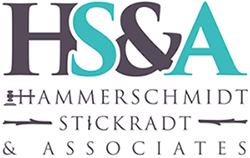In the mortgage-servicing business, one may prevent foreclosure by working with the lender, investor, or loan servicer. While deeds in lieu of foreclosure, repayment plans, short sales, and forbearance agreements can also help prevent foreclosure, many financially struggling borrowers opt for a loan modification. It is, however, not for everyone. At times, a borrower who cannot repay what they owe would be better off filing for bankruptcy instead.
If you are struggling to pay your mortgage, consult with competent Royal Oak bankruptcy attorneys to knows the most appropriate way to avoid foreclosure.
What are the different home loan modification programs?
It is not unusual for an individual buying a new home to get a loan that they would have trouble paying off. This is the main idea behind the Making Home Affordable Program – Home Affordable Modification Program (HAMP), which gave eligible homeowners the chance to lower their monthly mortgage payments.
There are various ways for individuals with unpaid monthly payments to find an alternative to foreclosure successfully. At present, many mortgage modification programs are available for delinquent borrowers or those with unpaid monthly mortgage payments. However, before learning how to get a mortgage loan modification, it would be helpful to know what this written agreement entails.
In general, modifications change the original terms of the promissory note, thereby extending the loan term or even lowering the interest rate. Those behind their monthly payments might be able to add the overdue amount to the loan balance, although investors and lenders would rarely approve principal reductions. This is different from refinancing your mortgage since you will not replace your home loan with a new mortgage. It is only modified.
How can I proceed with a loan modification program to stop foreclosure?
The first step you must take is to ask for a loss mitigation application from your mortgage servicer (home retention or loss mitigation department). You will often be asked to document your personal information, property information, and mortgage information. You must show your current financial situation through an income and expense financial sheet. An affidavit of hardship may include recent pay stubs, tax returns, and bank statements as supporting documents.
A government modification program may be available to specific borrowers, depending on the type of mortgage. In the case of Fannie Mae and Freddie Mac or USDA mortgages, or mortgages that are FHA-insured or VA-guaranteed, a homeowner may qualify for government mortgage modification programs. Additionally, several investors are offering in-house ‘proprietary’ modification options, which may or may not meet your specific needs.
There are many foreclosure alternatives out there, but one may be more appropriate than others. Knowledgeable and well-trained Royal Oak bankruptcy lawyers can help you decide by pointing out the pros and cons of loan modifications and bankruptcy filings.
I wanted to avoid foreclosure, but my application was denied. Can I appeal?
To be eligible for a mortgage modification, you must be able to show that there is a financial hardship aspect, which a divorce could have caused, loss of household income, or having to take a lower-paying job. Additionally, you must prove that the property in question is your primary residence. Your current monthly income will allow you to make regular payments under the modified terms.
In general, an application for a loan modification will be approved once guidelines set by the U.S. Department of Housing and Urban Development and the investor or mortgage lender have been met. This means that contrary to what some loan modification companies claim, haggling and negotiating is not necessary for the loan modification process. Aside from the fact that the services of a loan modification company are rarely necessary, it is you who can best respond to clarifications related to the paperwork you submitted.
If your loan modification is denied, you could try and file an appeal within 14 days after the mortgage servicer denied your original application. Appeals are generally possible for those who were able to send a request for mortgage assistance 90 days before the foreclosure sale, and the bank denied you any of the loan modification programs it offers. Keep in mind that you cannot appeal a second time. If the servicer decides to provide you with a loan modification, you have 14 days to accept or reject it.
Seeking legal help from a Royal Oak loan modification attorney
There are several loss mitigation laws and foreclosure laws that homeowners must be familiar with. Various federal mortgage servicing laws are meant to protect borrowers during the loss mitigation process. Additionally, the Homeowner Bill of Rights or other comparable state laws regulate how a mortgage company or servicer processes modification applications.
A hands-on and reliable Royal Oak bankruptcy attorney can answer your questions related to a home mortgage, such as the difference between a first mortgage and a second mortgage. They can also explain the disadvantages of a deed in lieu of foreclosure, when a loan modification is ideal, and if it would be better for you to file for bankruptcy at the bankruptcy court. Contact us at Hammerschmidt Stickradt & Associates and consult with a credible legal professional from our Royal Oak bankruptcy law firm.




